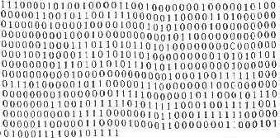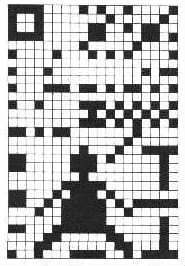 If we conclude that there are many intelligent life forms on planets circling strange stars, scattered throughout our galaxy (and beyond), is it possible to actually communicate with them? Here are some questions we must answer:
Because the messages will be sent as electromagnetic waves, however, they will continue on forever into space, diminishing in strength with every light-year covered, but eventually getting there. With the radio telescopes we on Earth posess now, we are capable of detecting such messages. Searches have been made, and more are planned. For lots of good information about the search for extra-terrestrial life (S.E.T.I.), visit our 'Links' page elsewhere on this site! Sending a message is much more expensive, however. While we are occasionally using our telescopes to listen for messages from the stars, the expense of actually sending a signal is large enough that no nation has yet undertaken it. In one sense, however, we HAVE actually been sending messages to the stars for over 80 years. Our radio and TV broadcasts, begun early in the previous century, 'leaked' out into space, and these signals could theoretically be picked up by listeners out there with a powerful enough receiver. Perhaps some alien race is right now watching reruns of 'I Love Lucy'! Where to look? Well, we know what our own star, the sun, is like, so logically we should aim our telescopes at similar stars that are within 100 light-years of us. (The closer the star, the stronger the signal). As for the frequency to check, it was long ago decided by scientists that a corresponding wavelength of 21 cm is the most likely one that would be used for messages, as this corresponds to a wavelength associated with hydrogen, the most abundant element in the universe. In any case, computer assisted searches now make it possible to listen in on many frequencies simultaneously. If you have not yet read the book 'Contact', by Carl Sagan, or seen the movie, I highly recommend both! (Much more explanation and detail is available in the book). What form will these messages take? When these ideas were first being discussed some 60 years ago, scientists assumed that a message from another civilization would need to be very simple,  so that other beings could decode it. As received, the message in its simplest form would be digital; ie: a series of 1's and 0's. so that other beings could decode it. As received, the message in its simplest form would be digital; ie: a series of 1's and 0's.A simple way to pass on information this way would be to make the total number of digits in the message a product of two prime numbers, which could then forn the dimensions of a two-dimensional picture made from the 1's and 0's.  Such a message was first prepared by an astronomer named Frank Drake. The signal he made up, along with the picture you get from it (a 29 x 19 array, with the 1's being black boxes, and the 0's as white ones) is displayed at the right. Despite its simplicity, there is a lot of information contained in this picture, supposedly from an alien civilization circling some distant star.
At the bottom is a picture of the alien 'himself'. The picture also reveals his stature and size (as measured in wavelengths of the signal), information about the number and sizes of the planets in his solar system, and that his biology involves carbon and oxygen atoms (top right corner), as does ours. The message even contains details about how many beings there are on his home planet, as well as the fact that they inhabit several other planets in their solar system as well.
Such a message was first prepared by an astronomer named Frank Drake. The signal he made up, along with the picture you get from it (a 29 x 19 array, with the 1's being black boxes, and the 0's as white ones) is displayed at the right. Despite its simplicity, there is a lot of information contained in this picture, supposedly from an alien civilization circling some distant star.
At the bottom is a picture of the alien 'himself'. The picture also reveals his stature and size (as measured in wavelengths of the signal), information about the number and sizes of the planets in his solar system, and that his biology involves carbon and oxygen atoms (top right corner), as does ours. The message even contains details about how many beings there are on his home planet, as well as the fact that they inhabit several other planets in their solar system as well.
Since these ideas were first discussed, in the early 'sixties, we have made great strides in the area of communications and computers. It is now possible for us to send (and decode) messages that contain actual photographs, text, and even video. Translation algorithms could be used to decode the text, especially if it included a 'primer' to help us read it. Again I refer you to Sagan's book 'Contact', where these ideas are discussed in much greater detail. It is entirely possible that if intelligent civilizations are out there, and sending messages, we could intercept them. But of course, this just leaves us with a whole bunch of new questions!
|